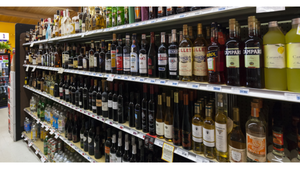The Colors of Health Takes on the Increasing Per-Capita Consumption of Fruits and Vegetables
January 1, 2018
Increasing fruit and vegetables consumption has been one of the leading recommendations in the Dietary Guidelines For Americans (DGAs), as well as from most major health-promotion organizations in America. Sadly, not much, even though people say the #1 reason for eating fruits and vegetables is “to stay healthy.” In spite of all the well-intended, public- and nonprofit-sector programs, Americans have been stuck at about 1.8 cups a day for two decades: barely more than one-third of the DGA recommendations. The DGA Recommendations That Few Really Know. So, what are the recommendations for fruits and vegetables? Most people’s knowledge of the actual recommendations is probably quite low. Ask yourself—or family and friends—this question: “For an average American consuming somewhere between 2,000 and 2,400 calories a day, what is the daily DGA-recommended amount of fruits and vegetables for better health?” Chances are high the answer will be some number with the word “servings” after it. Like: “5 servings a day,” or “5 to 9 servings,” or even “9 to 13 servings.” First, “servings” as a dietary measurement term for fruits and vegetables is no longer relevant. The DGAs began phasing out the term “servings” for fruits and veggies in 2005, and now speak only in “cups.” There is a reason for that. People know what a cup is. The answer to the earlier question is: about 5 cups a day–2 cups of fruit and 3 cups of vegetables. Again, that’s 5 cups a day. Familiar ring, right? But that’s fully two times the amount communicated in the old “5 servings a day” message many people still think about (the old “serving” is half a cup). Critically important, 5 cups a day is nearly 3 times more than the 1.8 cups Americans are eating on average every day. That may sound daunting, but it’s real. How do we help Americans nearly triple the amount of fruits and vegetables that they are buying and eating today, given that people usually need motivation and guidance to reach a goal that involves such a tough, but important challenge? Introducing The Colors of Health®. 5 Colors. 5 Cups. Every Day. It’s time to take on this challenge. It’s time for a simple and engaging marketing solution with a focus on communicating and achieving the ambitious 5 Cups a Day goal. The Colors of Health is a color-guided, goal-oriented, marketing initiative designed to actively engage people in buying and eating a colorful variety of fruits and vegetables in all forms, so they can reach 5 Cups a Day for better health. With its 5-Color Guide, and its Daily Engagement Tools, The Colors of Health will change the way people think about buying and eating fruits and vegetables. Changing the Way People Think About Fruits and Vegetables. The Colors of Health® is now on a mission to increase daily consumption of fruits and vegetables to 5 Cups a Day by changing the way people think about fruits and vegetables in their daily lives through simple, doable marketing strategies. These 5 simple, but critical marketing elements give The Colors of Health® its foundation for success:
First: leverage the perceived health benefits—with “to stay healthy” the #1 reason people eat fruits and vegetables.
Second: communicate and focus on the 5 Cups a Day goal.
Third: Think Color—innovatively integrate the now well-publicized, science-based, 5-color system created by The Colors of Health® founders.
Fourth: help position and promote America’s supermarkets and dietitians as “the architects of healthy choices.”
Fifth: use the Daily Tools of Engagement™ to insure that colorful fruits and vegetables are top-of-mind, each and every day, with shoppers and consumers.
Color Is The Guide. Engagement is the Key.
About the Author
You May Also Like




